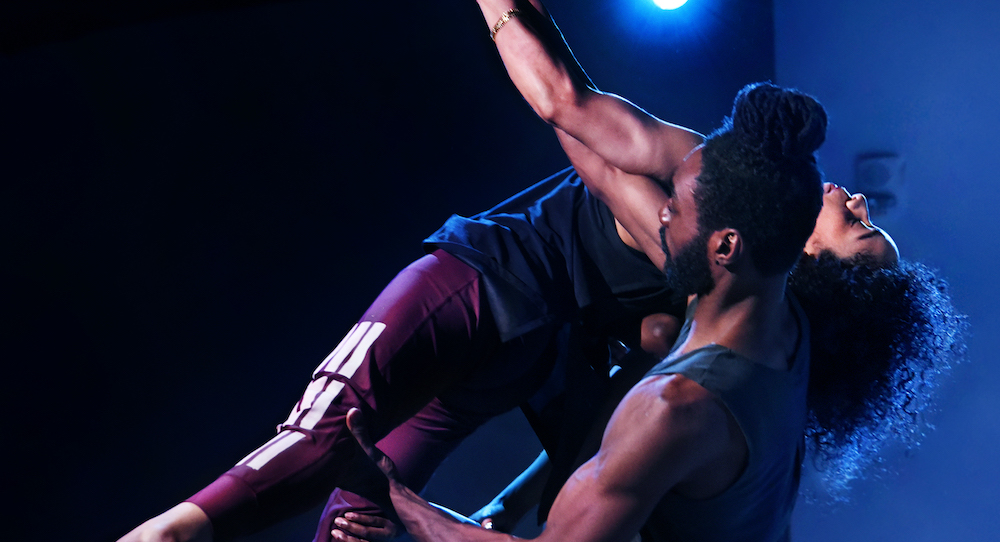Livestreamed from Pao Arts Center, Boston, MA.
June 5, 2021.
“History is written by the victors,” goes the old saying. One could argue that the same goes for the media and pop culture — which shape societal narratives and values, in turn which shape our world. Power often means power over whose story is told and how it’s told. Our stories live with us in our very bodies, and dance can be a way to tell untold stories.
Continuum Dance Project has done just that with Crossings, which pairs fresh, bold contemporary dance with the stories of immigrants in the U.S., a group who rarely get to speak for themselves and share the truth of their experiences. Rather than advocating for any course of action or condemning any particular point of view, the work simply puts these stories front-and-center and lets audience members leave with their own thoughts, experiences, and — be they changed or unchanged — beliefs.
The work shares these immigrant stories through spoken voiceover (sound design by Adriane Brayton and Rose O’Malley, audio engineering by O’Malley). The individuals speaking describe aspects of their unique immigrant experiences. Each interviewee has a personal connection with someone on the project’s creative team, program information explains.
Some of them describe living in the in-between. A native of Italy, for example, notes feeling like she’s not Italian any longer but also not American. The dancers of Continuum Dance Project move throughout this voiceover — often weighted, releasing to gravity’s pressure. Yet again and again, they rise to move through space again.
There’s a clear sense of determination in how they move and their overall presence — no matter how many times they’ve fallen, rising and dancing with a clear gaze ahead and eating up the space with their whole bodies. A second main section has them moving to a score full of turbulence and uncertainty, but their resolve remains. Choreography is from Brayton and Fernadina Chan in collaboration with the dancers.
Throughout, the ensemble dances in an area enclosed by ropes and short, thick posts (scenic design by Myra Balk). Entering and exiting the enclosed space feels like an embodiment of that moving in the “in-between” — a somewhat literal illustration, but one which is also executed in a way that creates plenty of nuance and open questions. This set design also underscores a sense of constraint, of having only so much space for choice and exploration.
Costumes by Soyoung L Kim — close-fitting, plain, and in various dark shades — add to how design in the work builds meaning. Broad white lines across pants legs and tops are aesthetically interesting, but also make me think about “marks” on us — things about us that are unchangeable, no matter how much we might try to change them.
The challenges evident in these stories feel even more visually and kinesthetically clear through memorable choreographic choices in a third section, which has voiceover returning. The dancers became entangled in a rope, making that sense of constraint all the clearer. Rather than anger or a sense of defeat, the dancers come together, standing back to back as if in creating power in numbers.
The following section brings a little more light and hope, interviewees speaking about cuisine and other aspects of their native cultures while dancers move with a new sense of liftedness and unity (more unison than seen previously). Some interviewees also say that all of the struggles are worth it for the opportunity in America.
A few final sections have more turbulence and grounded, weighted movement vocabulary. I could have been satisfied with the work ending with that more hopeful section, I think at first, but then a more intuitive part of me remembers that progress isn’t linear, that harmony and good feelings don’t last forever. I come to a place of appreciation for this more complex, and arguably more truthful, structure.
The ending has dancers facing upstage and moving in unison together, with lights going down quickly. This choice reinforces for me that those ebbs and flows continue as long as life continues. We all take crossings, yet undeniably some of our crossings have more turbulence and challenge. What matters most is that all of our stories are heard, something that power dynamics in our society too often impede.
We can learn the true nature of each other’s journeys and crossings through stories, and feeling it viscerally through dance can make those stories all the more resonant. Thank you, Continuum Dance Project, for using the power of dance to shine a light on unheard stories. Our bodies have powerful tales to tell, if we allow them to do the telling.
By Kathryn Boland of Dance Informa.















